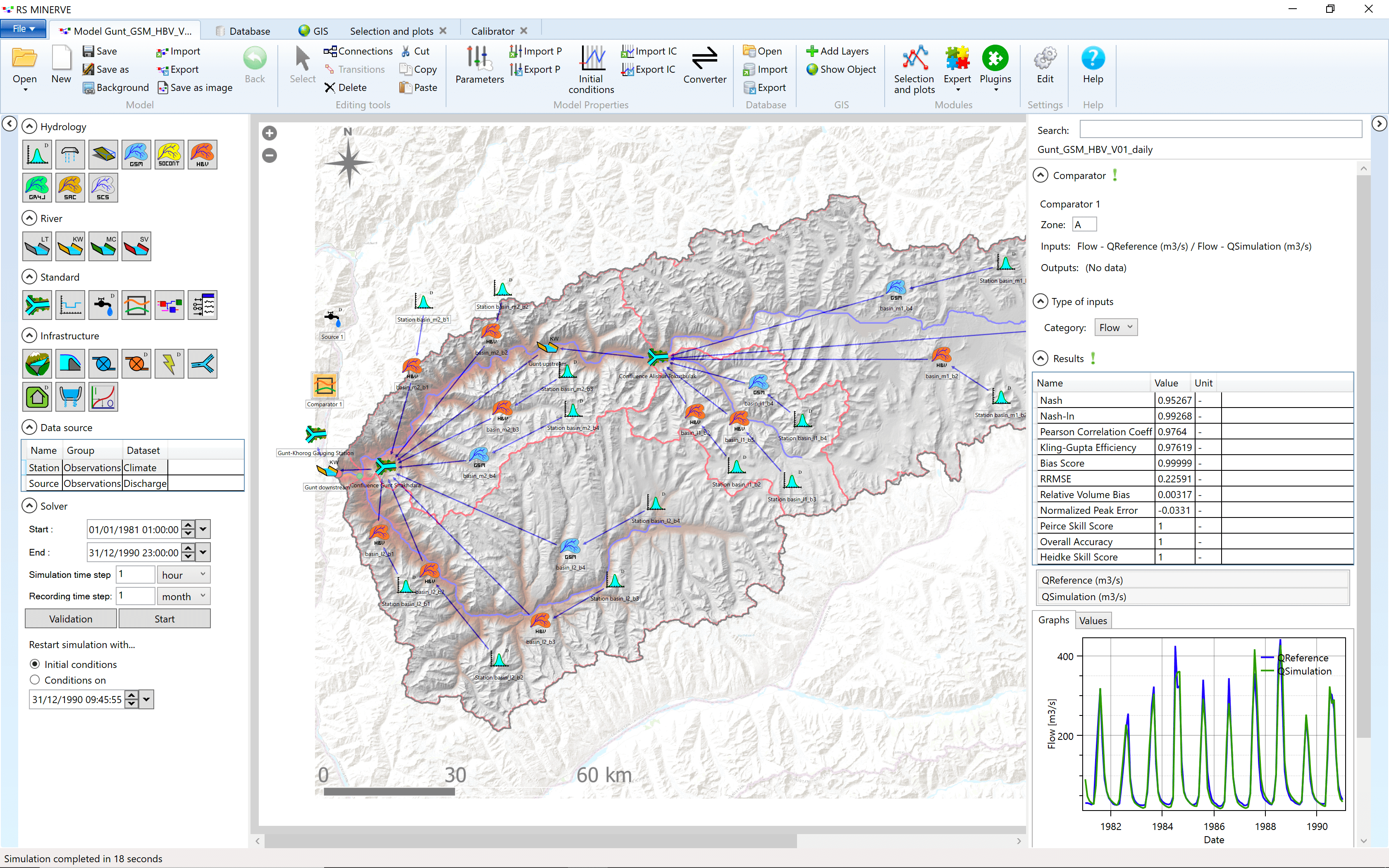Chapter 6 Hydrological-Hydraulic Modeling
Hydrological-hydraulic models are used for different purposes, including for the design of basin plans while taking into consideration different development options, for the study of effective water resources management schemes while taking into consideration the different types of sectoral users and uses of water in a basin (ideally also including minimal environmental flows), and for the detailed study of basin-scale climate impacts and their repercussions.
This Chapter introduces combined hydrologic and hydraulic modeling using the freely available graphical modeling environment RSMinerve (CREALP 2021; Foehn et al. 2020; Garcia Hernandez et al. 2020)15. Figure 6.1 shows a screen shot of a model of the Gunt river basin setup in RSMinerve as a teaser.

Figure 6.1: Screenshot of an RSMinerve model setup for Gunt river basin.
It should be noted that other modeling packages exist for hydrological-hydraulic modeling. Among others, these include
- WEAP: Water Evaluation and Planning System,
- SWAT: Soil & Water Assessment Tool, and
- Mike Hydro Basin
As some if not most of these modeling packages are license-based, the advantage of using the combination of QGIS, R and RSMinerve is that this is a completely free software suit for any user and use scenario.
Departing from catchment GIS data, RS Minerve allows to quickly develop, test and calibrate different types of lumped conceptual precipitation runoff models while taking into account the evolution of water balances in glacier, snow, surface and subsurface compartments over time and in different sections in the catchment under consideration. This is demonstrated here for the Gunt River Basin in the Pamirs (see Chapter 3.1 for more information).
The main goal in this Chapter is to familiarize the student on how to setup such model, calibrate and validate it for past and current climate conditions and then to study climate change impacts in the basin.
The reader is advised to consult the user manual and familiarizes himself or herself with the walk through examples that are discussed and presented there. They give a solid first hands-on introduction about the basic functionalities of the modeling environment.↩︎